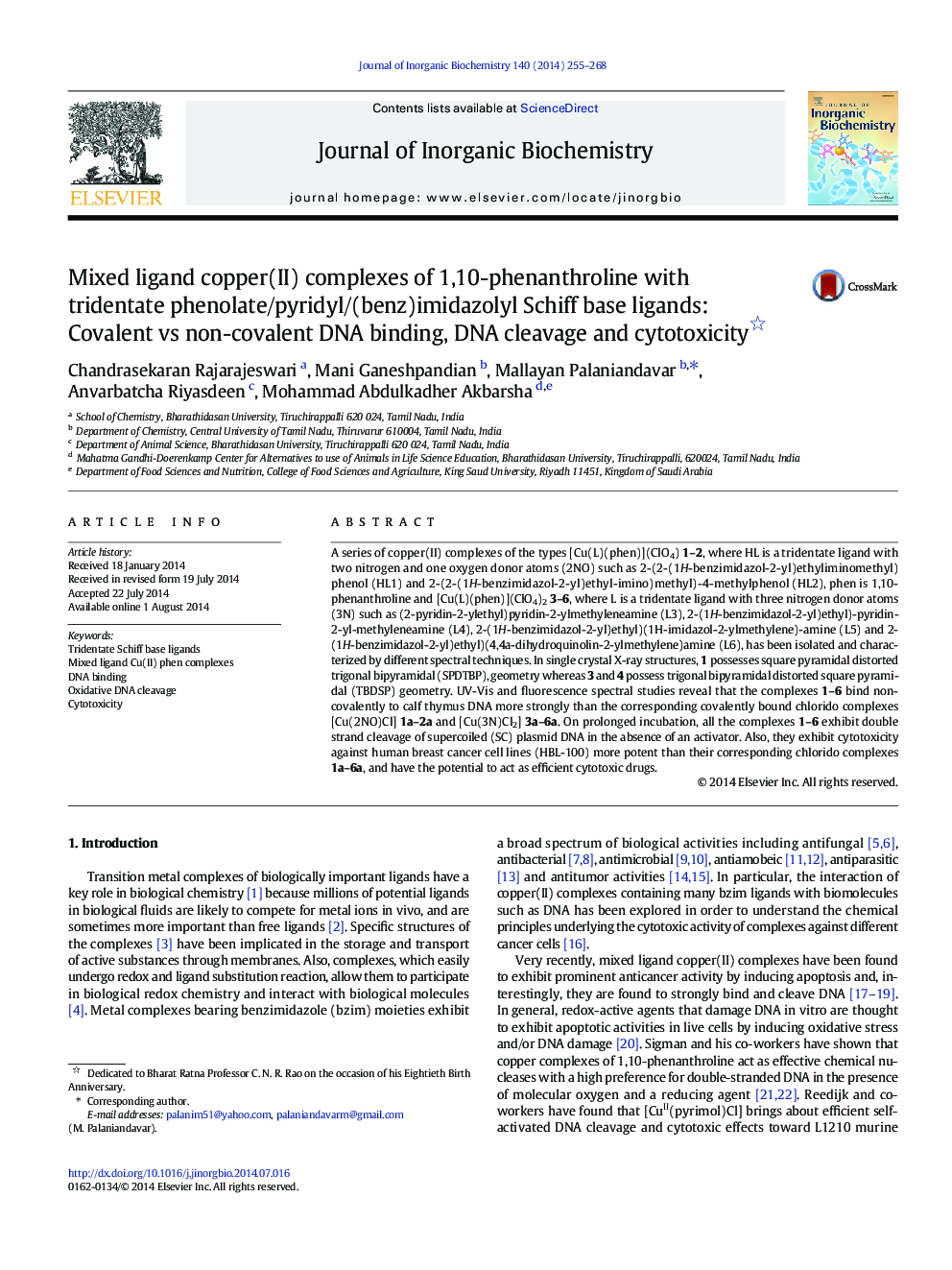| Article ID | Journal | Published Year | Pages | File Type |
|---|---|---|---|---|
| 1317320 | Journal of Inorganic Biochemistry | 2014 | 14 Pages |
A series of copper(II) complexes of the types [Cu(L)(phen)](ClO4) 1–2, where HL is a tridentate ligand with two nitrogen and one oxygen donor atoms (2NO) such as 2-(2-(1H-benzimidazol-2-yl)ethyliminomethyl)phenol (HL1) and 2-(2-(1H-benzimidazol-2-yl)ethyl-imino)methyl)-4-methylphenol (HL2), phen is 1,10-phenanthroline and [Cu(L)(phen)](ClO4)23–6, where L is a tridentate ligand with three nitrogen donor atoms (3N) such as (2-pyridin-2-ylethyl)pyridin-2-ylmethyleneamine (L3), 2-(1H-benzimidazol-2-yl)ethyl)-pyridin-2-yl-methyleneamine (L4), 2-(1H-benzimidazol-2-yl)ethyl)(1H-imidazol-2-ylmethylene)-amine (L5) and 2-(1H-benzimidazol-2-yl)ethyl)(4,4a-dihydroquinolin-2-ylmethylene)amine (L6), has been isolated and characterized by different spectral techniques. In single crystal X-ray structures, 1 possesses square pyramidal distorted trigonal bipyramidal (SPDTBP), geometry whereas 3 and 4 possess trigonal bipyramidal distorted square pyramidal (TBDSP) geometry. UV-Vis and fluorescence spectral studies reveal that the complexes 1–6 bind non-covalently to calf thymus DNA more strongly than the corresponding covalently bound chlorido complexes [Cu(2NO)Cl] 1a–2a and [Cu(3N)Cl2] 3a–6a. On prolonged incubation, all the complexes 1–6 exhibit double strand cleavage of supercoiled (SC) plasmid DNA in the absence of an activator. Also, they exhibit cytotoxicity against human breast cancer cell lines (HBL-100) more potent than their corresponding chlorido complexes 1a–6a, and have the potential to act as efficient cytotoxic drugs.
Graphical abstractThe mixed ligand complexes [Cu(L)(phen)]2 +, which bind non-covalently to DNA, exhibit more efficient DNA cleavage and display more potent cytotoxicity than their corresponding [Cu(L)Cl2] complexesFigure optionsDownload full-size imageDownload as PowerPoint slide
